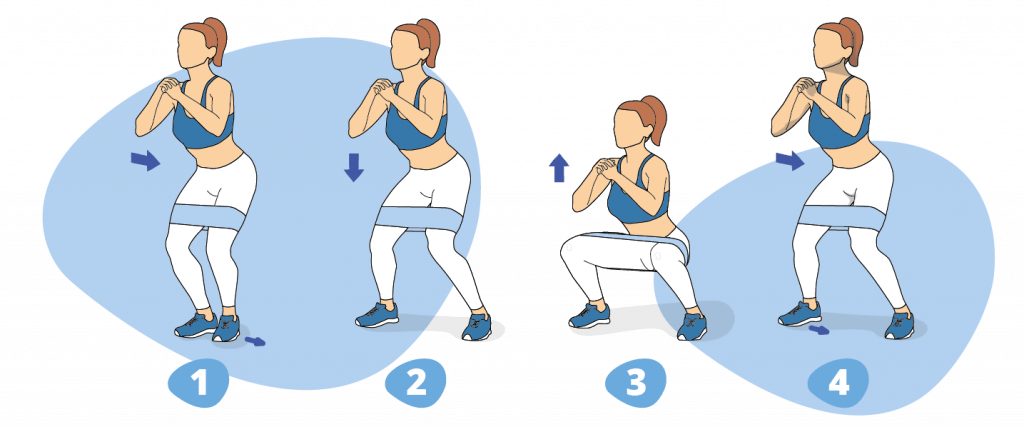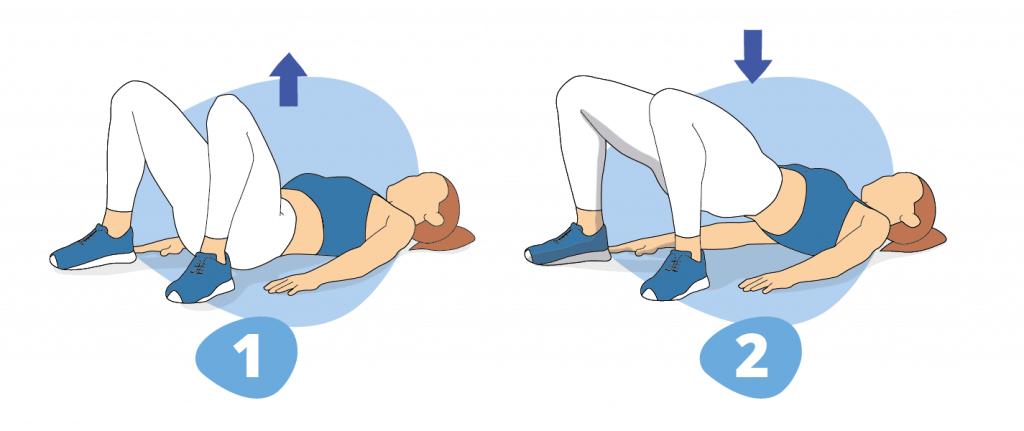Has your bladder weakness ever made you feel uncomfortable when you are at an event, leaving you feeling frustrated with the frequent urge to go to the bathroom? Making major lifestyle changes like cancelling social events isn’t what you have imagined for yourself. It is totally understandable to get disappointed sometimes, but don’t let bladder weakness take full control of your life.
How to Overcome Bladder Weakness
If you want to go about your day worry-free, there are pelvic floor muscle exercises and yoga poses that can help you treat bladder weakness. Studies have shown that these exercises can restore the strength of the weakened muscles in the pelvic floor and bladder, which may disrupt normal urinary function in adults.i To strengthen these muscles, you need to learn how to relax them.ii
In this article, we will show you to how to perform 5 beginner-friendly bladder weakness exercises, including some yoga poses.

Squatiii
Strong hamstrings and glutes play an important role in keeping your pelvic floor healthy. Squats help develop these muscles and release chronic tension, which in turn may treat bladder weakness.
To perform a narrow and shallow squat, follow the steps below:
- Stand straight with your feet hip-width apart.
- Stomach in, chest out, and bend your knees while keeping your spine straight.
- Lower down as if you’re taking a seat. Go as low as you can.
- Squeeze your glutes while you’re returning to a standing position. Keep your legs straight.
- Repeat these steps for three sets of 10 repetitions.
Remember to concentrate on your breathing and try to relax. For best results, squat a few times a day, such as when you wake up, at noon, and before bedtime. Alternatively, if you want to do it the Yogi way, watch this video.

Kegel Exercisesiv
Kegel exercises for men and women focus on lifting and holding and then relaxing the sphincters (these are the muscles that control the flow of urine).
Here is an example of how to do it correctly
- Sit in a comfortable position.
- As you exhale, lift and hold your sphincters for 3 seconds. Then, as you inhale, relax for 3 seconds.
- Repeat 10 times. Do this twice a day.
You can also perform Kegels while on a Cow Pose or lying down. As you strengthen your muscles, add 1-2 seconds when you do step #2. You may also increase the number of sets and times you do Kegel exercises for women and men per day.
Squeeze and Release
This bladder weakness exercise is a fast squeeze and release movement that will enhance your pelvic floor muscles’ ability to respond rapidly.
- Sit or lie down in a comfortable position.
- Visualise your pelvic floor muscles.
- Once you get a hold of these muscles, squeeze them as quickly as you can and then release.
- Rest for 3 seconds before you restart.
- Repeat up to 20 times, twice a day.
You can also do this exercise each time you cough, sneeze, or lift something heavy. This helps strengthen your pelvic floor further and fight bladder weakness.

Bridge
Also known as Setu Bandha in Yoga, bridge is a restorative and energising exercise that can activate your pelvic floor.
- Place your mat and lie down on your back. You may also place a blanket under your shoulders to prevent neck pain.
- Bend your knees while keeping your feet flat on the mat hip-width apart.
- Place your arms to the sides with your palms facing downward.
- As you exhale, press your inner feet and arms into the floor.
- Push your tailbone upward, tighten your buttocks, and lift it off the mat. Stay in this position for 8 seconds.
- Release. Lower your buttocks to the mat.
- Repeat 10 times for 2 sets.

Reclining Bound Angle Posev
Also referred to as Supta Baddha Konasana, it is a classic restorative Yoga pose that can work the entire pelvic floor muscles.
- Lie straight and flat on the floor. Then, gently bend your knees. Bring your feet together with the outer edges of both your feet on the floor. Place your heels close to your groin.
- Your palms must lie next to your hips and pressed downwards.
- Exhale and ensure that your abdominal muscles contract as your tailbone moves close to your pubic bone. Feel the elongation in your lower back and the stability in your spine as your pelvis tilts. Hold this position.
- Quickly inhale, and as you exhale again, let your knees open up such that it creates a good stretch in your groin and inner thighs.
- You must ensure your lower spine is not forcefully arched. Also, ensure your shoulders are relaxed and placed away from your neck.
- Now stay in the pose for up to a minute, breathing deeply and slowly.
- Exhale and exit the pose. But before you do so, press your lower back and knees to the floor to give that final stretch. Then, hug your knees, and rock from side to side before you release.
Notice the Difference within 3 to 6 Months
As we all know, results don’t happen overnight. You may start to notice the difference after consistently doing these exercises for 3 to 6 months. You may then regain control of your bladder, have fewer accidents, and able to do more repetitions. They may also help minimise your risk of associated complications, such as emotional distress and sleep deprivation.
If you experience a little discomfort while you’re working out, wear light pads. We have a wide range of pads, from mini, normal, extra, maxi to super. For product enquiries, feel free to contact us.

4 Comments
I am only incontinent, sometimes in the night , I’m sure it’s because I am in a deep sleep. I am okay during the day , in the night i wake up wanting to go, then I realise I’ve already been, what can I do to.resolve.this ?.
Fantastic post however I was wanting to know if you could write a litte
more on this topic? I’d be very thankful if you could elaborate a little bit more.
Cheers!
Please write more to improve bladder compression.
Amazing page of what to do to help oneself. Hope it stays online long-term for reference – it has everything I need all in one place!